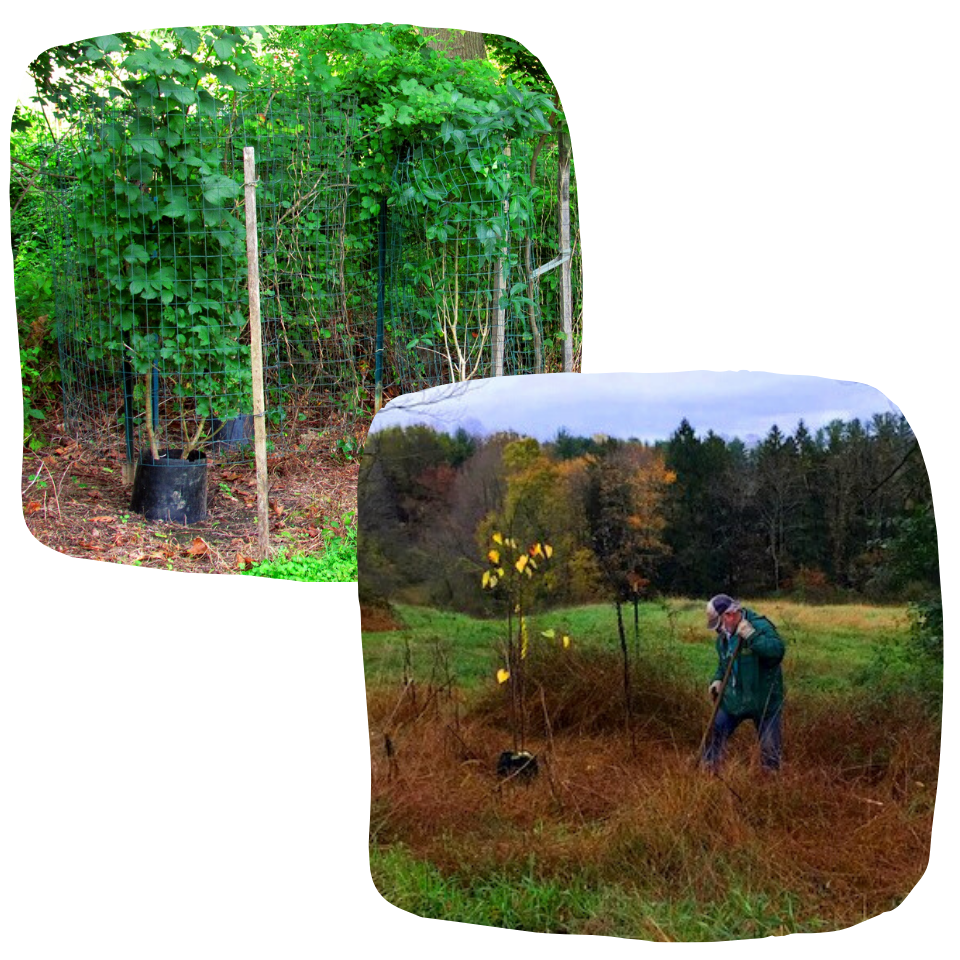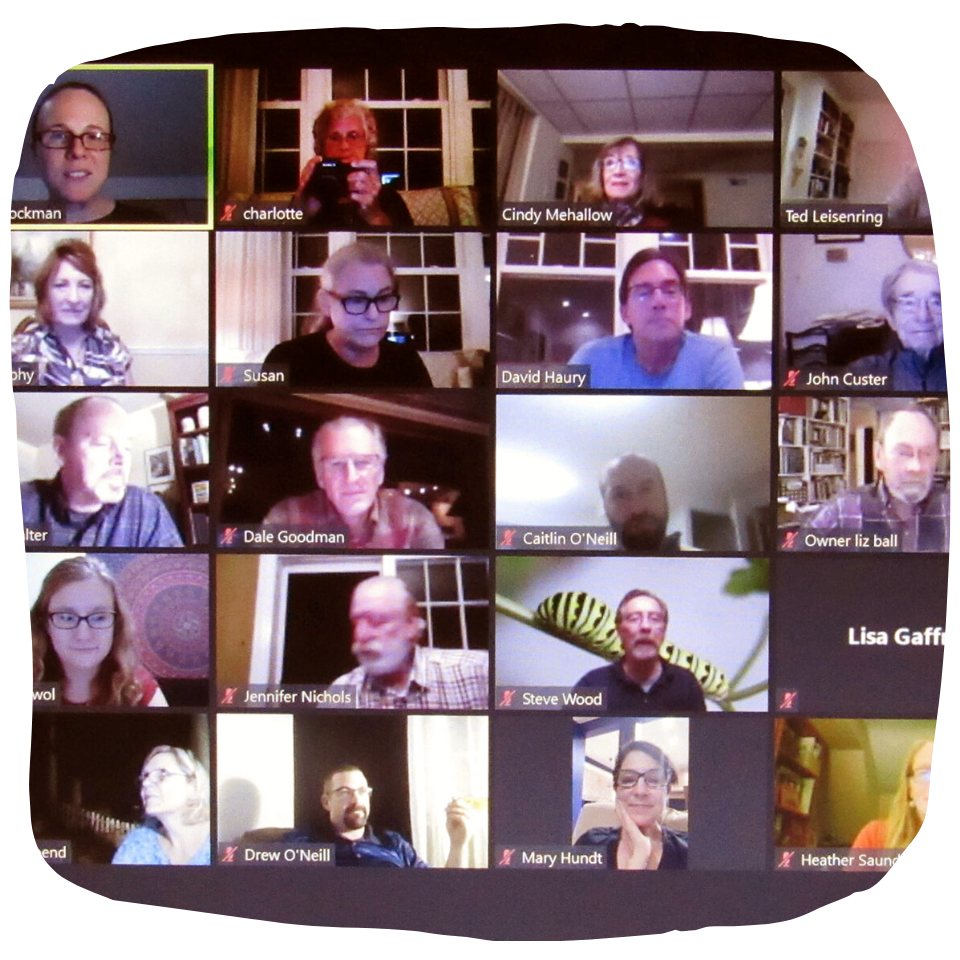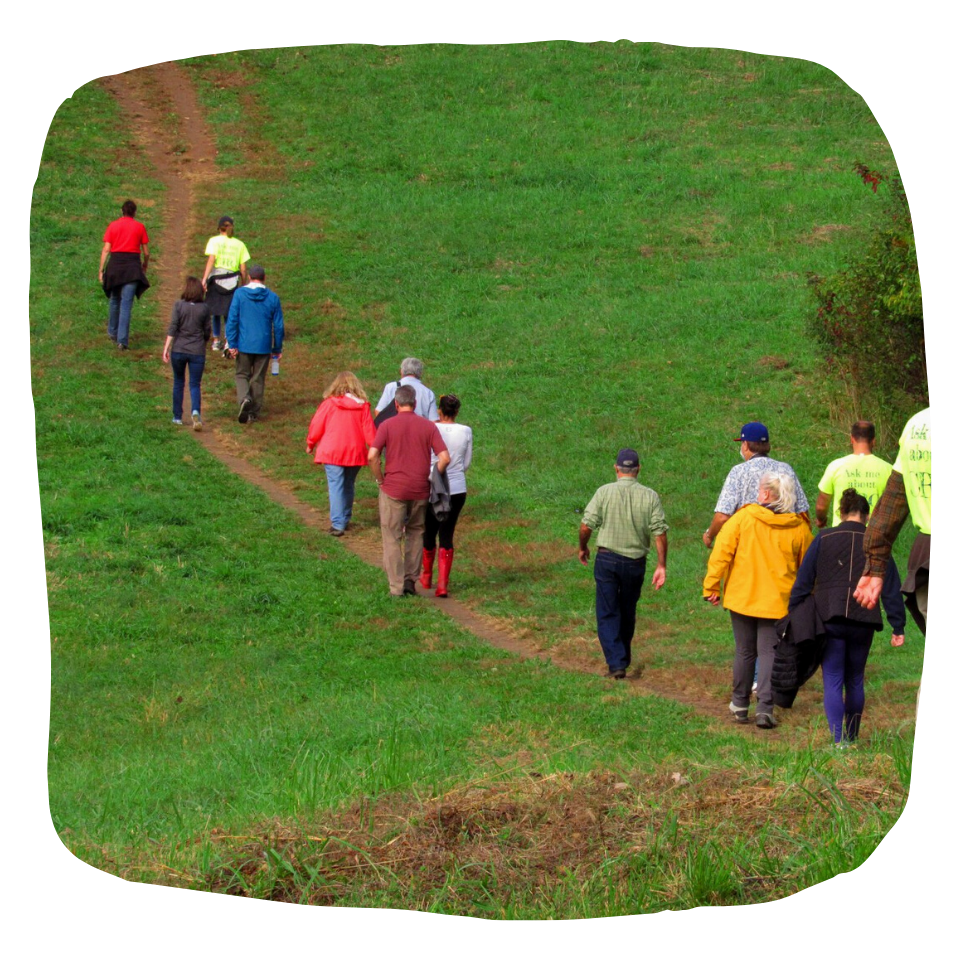Fall in our Watersheds
by David Hilbert
In the fall, the bright colors of our trees' leaves are not just beautiful, but also revealing of the different habitats and strategies utilized by various species. The bright red color you see in some trees is caused by anthocyanin, a pigment that acts as a sunscreen of sorts to protect leaves from absorbing excess sunlight exactly when the tree is withdrawing nutrients back to its woody tissue. As a result, you will notice that the reddest of our fall trees - Flowering Dogwood and Black Gum, for instance - are species that are flexible as to the shadiness of their habitat. It is exactly these species, when placed in the sun, that protect themselves with the most anthocyanins.
The bright yellow and orange pigments visible in other trees - xanthophylls and carotenoids respectively - exist in the trees' leaves all year long, masked by the overpowering green color of the chlorophyll used to facilitate the tree's growth. These pigments, however, fulfill their own sun-blocking function the entire growing season, and so the trees with the brightest yellow and orange foliage- Tulip Poplar or Hickories, for instance- tend to be found in open, sunny locations.

CRC' Fall Plantings Go On Despite Covid
During Fall, David Hilbert makes sure his truck is gassed up to begin his far-reaching travels to various native plant and tree providers, and Lynn Meza kicks into high gear, staffing CRC’s many fall planting events. With the addition of masks, hand sanitizer and social distancing, this fall was no different.
CRC’s fall plantings at Broadacres will hopefully help stabilize the many bends in the upper reaches of Crum Creek as it traverses this large expanse of conserved private property with the addition of flood-tolerant Sycamores and Red Maples, which will also contribute shade and thus keep water temperatures from rising in this valuable fish-breeding habitat. In addition, our plantings seek to minimize erosion along sharply-descending Rawson Run, which joins Crum Creek at the site, with the addition of species such as Hackberry and Redbud adapted to the steep banks.
Longtime CRC Corporate Partner, DePuy Synthes, came out to plant trees at Okehocking Preserve. Plantings at Okehocking added valuable species diversity both to areas within the park too high to mow, with the addition of ridegetop species such as Scarlet and White Oak that love the full sun and rocky soil, as well as to areas that are too low to mow, such as Blackgum and Hornbeam in the shady hollows right along Delchester Run. In addition, our plantings on the eastern side of the Run will hopefully improve the functionality of the effluent spray field at the top of the hill by helping filter the run-off.
The business networking group, Chester Young Professionals, volunteered at a cleanup effort along the Chester Waterfront at Barry Bridge Park. And general volunteers helped with the Okehocking project and also came out to plant trees in Willistown. CRC finished the Fall 2020 season with one final event in November, doing invasives removal at First Avenue Park in Malvern, in preparation for a spring 2021 planting.



CRC Environmental Awards and Oktobertaste, via Zoom!
CRC presented our Annual Environmental Awards at an Oktobertaste celebration in October 2020 -- for the first time via zoom. This year’s awards continued to celebrate commitment to the environment and local watersheds. Anne Murphy received the CRC Environmental Leadership Award, and Rick Ray received the CRC Volunteer Stewardship Award.
Anne Murphy was CRC’s first employee and is remembered for her tireless and inspiring work ethic. She served as the organization’s Executive Director from 2003 through 2013. Prior to that, she was Development Director at Green Valleys Watersheds Association.


During her tenure at CRC, Anne initiated many watershed restoration and educational programs, including the funding and planting of many trees on public lands. She also worked with Delco Manning Trout Unlimited on several post-dam removal cleanups and restorations, partnered with municipalities on programs for homeowners and employees, worked with Marple Newtown High School on an annual assessment of Crum Creek, and organized the annual streams cleanups.
Rick Ray serves on the CRC Tree Advisory Committee and has volunteered for many years at the CRC Streams Cleanup. Last summer, he worked on maintenance of a CRC planting at Rose Tree Park, donating more than 30 hours to lift tree cages, weed and remove vines, enhance garden fencing and update caging. A self-described “tree hugger,” Rick has taught at the Arboretum School of the Barnes Foundation for 25 years.
Rick and his wife, Liz Ball, started the Marple Tree Commission in 2007. After 10 years as Chairman, Rick is now horticulturist, overseeing the planting and maintenance of the 400 trees in Marple Township planted by the commission.


“CRC’s annual awards celebrate those who love and care for our watersheds,” says CRC Board President Ted Leisenring. “Our mission is to protect our local watersheds and we can’t do it alone. Thank goodness there are talented individuals like these award winners to help.”
Cindy Mehallow, Vice Chair of the Newtown Township EAC, also spoke during the zoom event about earlier CRC plantings in Newtown township. And CRC Tree Planting Coordinator David Hilbert described some of his work last summer maintaining CRC planting sites in both Chester and Delaware Counties. We had a small live auction, and enjoyed the Oktobertaste-themed snacks, 2SP Brewery’s delicious beer, and local cider. We are grateful to 2SP for donating the beer, as well as our generous sponsors, whose support did not waver despite the adjusted setting.
Okehocking Walk
Willistown Township’s Director of Parks and Recreation Mary Hundt and CRC’s David Hilbert led visitors in another popular CRC Nature Walk through Willistown Township’s Okehocking Preserve to discuss contrasting natural land management techniques that seek to preserve a balance between the risks posed by invasive plants, and the drastic aesthetic and ecological impact that their complete and sudden removal would cause. CRC Board member Walt Cressler added insights on how local geology affects the plant communities visible on our walk, as well as the impact of human modification on the landscape over the centuries.


